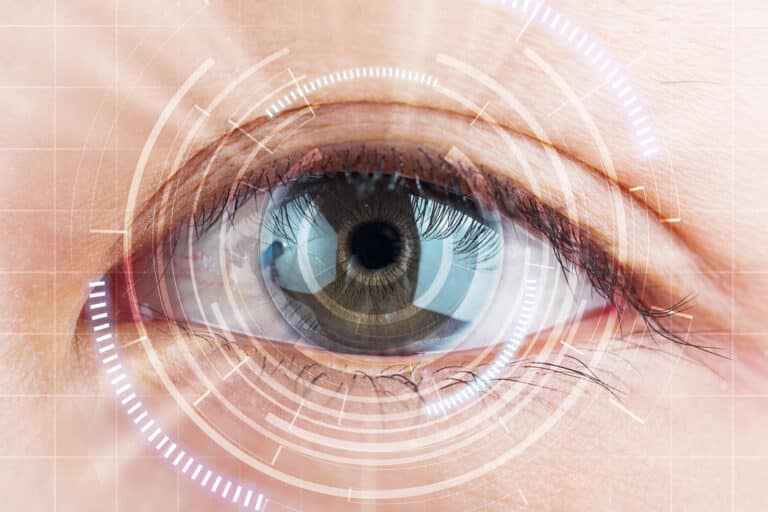Cataracts are a common, age-related vision impairment that can significantly affect daily life. While traditional cataract surgery is a well-established and highly effective treatment, advancements in technology have introduced laser cataract surgery as an increasingly precise and potentially beneficial option. For many patients, when deemed appropriate by your ophthalmologist, this advanced procedure offers enhanced safety and accuracy, leading to excellent visual outcomes.

The Role of the Femtosecond Laser in Modern Cataract Care
At the core of this advanced approach is the femtosecond laser, a revolutionary technology that can replace traditional handheld surgical instruments for certain critical steps. This sophisticated laser delivers unmatched precision, empowering your surgeon to perform these stages with exceptional accuracy.
Tower Clock Eye Center is proud to utilize the LenSx laser, the first FDA-approved laser designed exclusively for cataract surgery. With a global track record of over 400,000 successful procedures, the LenSx laser is recognized as a gold standard for its consistency, accuracy and reliability in laser eye surgery. If your surgeon determines that laser cataract surgery is the best fit for your individual eye, this technology my be suggested.
Enhanced Precision: Four Key Areas Where the Laser Excels
For eligible patients, the femtosecond laser can significantly improve the accuracy of cataract surgery in four crucial components, as identified by your surgeon:
- Corneal Incision: Precision in opening the eye.
- Anterior Capsulotomy: Exacting removal of the lens capsule.
- Lens/Cataract Fragmentation: Gentle breakdown of the clouded lens.
- Astigmatism Correction: Advanced treatment for refractive errors.
Let’s delve into how each of these components benefits from laser precision:
1. Superior Corneal Incisions with Laser Precision
Prior to your laser cataract removal procedure, if recommended, your ophthalmologist will create a detailed 3-D map of your eye’s surface using Optical Coherence Tomography (OCT). This advanced imaging allows your surgeon to precisely determine the ideal location, depth, and length for the laser-guided incision. This level of customization ensures an incision that surpasses the accuracy achievable with manual techniques.
A laser-guided corneal incision provides precise access to the eye’s interior. A key advantage of this method is its superior self-sealing ability post-surgery, which can significantly reduce the risk of infection and often eliminates the need for sutures. This contributes to a smoother recovery from your cataract procedure.
2. The Accurate Anterior Capsulotomy: A Critical Step
The eye’s natural lens is enveloped by a thin, transparent capsule. During cataract surgery, the front portion of this capsule (the anterior capsulotomy) must be carefully removed to access the clouded lens. Maintaining the integrity of the remaining capsule is paramount, as it will securely hold your new artificial intraocular lens (IOL) in place.
When your surgeon opts for laser-assisted cataract surgery, the femtosecond laser performs this critical step. Research consistently demonstrates that laser-assisted capsulotomies are more precise and reproducible than those performed using traditional methods, optimizing the stable placement of your new IOL implant.
3. Gentle Lens and Cataract Fragmentation
Once your surgeon has access to the cataract, the laser can be utilized to gently soften and fragment the clouded lens. This process breaks down the cataract into smaller, softer pieces, making them easier to remove with less energy during aspiration. This gentler approach can contribute to a faster recovery and reduced trauma to the eye during your cataract treatment.
4. Advanced Astigmatism Correction During Cataract Surgery
For many patients undergoing cataract surgery who also have astigmatism, there’s an opportunity to significantly reduce or even eliminate their reliance on glasses. If your surgeon recommends it, after the new IOL is implanted, the femtosecond laser can precisely correct astigmatism by making tiny, strategically placed incisions in the cornea.
These incisions, known as astigmatic keratotomy (AK) or limbal relaxing incisions (LRIs), demand extreme accuracy. The laser’s advanced scanning capabilities ensure a high degree of precision in their placement, depth and length, especially when guided by OCT images. As these incisions heal, the cornea’s shape is subtly altered from an irregular shape to a more ideal, spherical curvature, potentially resulting in significantly clearer vision without glasses. While a diamond-bladed scalpel can perform this, the laser offers superior accuracy when indicated.
Is Laser Cataract Surgery the Right Fit for Your Eyes?
It’s important to remember that traditional cataract surgery is a highly safe and effective procedure, and patients who undergo it should feel confident in their choice. However, for those patients for whom your surgeon deems it beneficial, laser cataract surgery offers distinct advantages through its unparalleled accuracy in corneal incisions, capsulotomy and astigmatism correction. These added benefits may lead to a reduced dependence on glasses for many individuals seeking advanced cataract removal. Your surgeon will discuss the best options for your specific vision needs.
Explore Your Cataract Surgery Options with Our Experts in Green Bay, Appleton and Shawano.
To discuss your cataract surgery options and schedule a comprehensive evaluation with our experienced team, call Tower Clock Eye Center at 920-499-3102 today. Our specialists are dedicated to providing the best eye care in Northeast Wisconsin, and will help you make an informed decision about your vision health.
